Historic Centre of Macau
It represents the architectural legacies of the city's cultural heritage, including monuments such as urban squares, streetscapes, churches and temples.It was described by UNESCO as: "with its historic street, residential, religious and public Portuguese and Chinese buildings, the historic centre of Macao provides a unique testimony to the meeting of aesthetic, cultural, architectural and technological influences from East and West," and "...it bears witness to one of the earliest and longest-lasting encounters between China and the West, based on the vibrancy of international trade.UNESCO then issued a warning to the Macau government, which led former Chief Executive Edmund Ho to sign a notice regulating height restrictions on buildings around the site.[6] In 2015, the New Macau Association submitted a report to UNESCO claiming that the government had failed to protect Macao's cultural heritage against threats by urban development projects.[7][6] In 2016, the Macau government approved an 81-meter construction limit for the residential project, which reportedly goes against the city's regulations on the height of buildings around the World Heritage Site Guia Lighthouse.



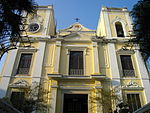
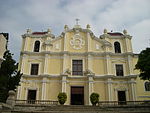
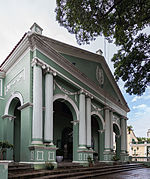


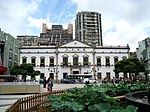



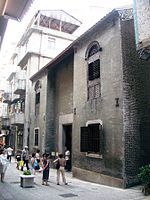


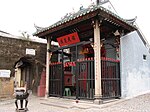



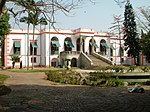
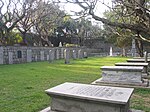

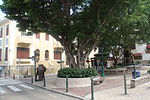

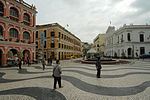
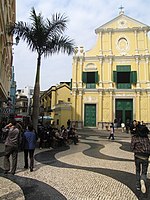
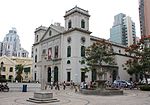




UNESCO World Heritage SiteRuins of St. Paul'sLocationPeople's Republic of ChinaMount HillGuia HillSessionCoordinatesGuangdongPortugueseChinesePortuguese colonyUNESCOWorld Heritage ListMacau peninsulaA-Ma TempleMoorish BarracksMandarin's HouseSt Lawrence's ChurchSt. Joseph's Seminary and ChurchDom Pedro V TheatreSir Robert Ho Tung LibraryLeal Senado BuildingSam Kai Vui KunHoly House of MercyCathedral of the Nativity of Our LadyLou Kau MansionSt. Dominic's ChurchNa Tcha TempleSection of the Old City WallsMonte ForteCasa GardenOld Protestant CemeteryEast India CompanySenado SquareGuia FortressSpecial Administrative RegionMunicipal Affairs BureauBasic Law of the Macao SARWorld Heritage SiteGuia LighthouseMacau Liaison OfficeEdmund HoNew Macau AssociationLiaison Office of the Central People's Government in the Macao Special Administrative Regionworld heritagesStanford UniversityUniversity of MacauClassified immovable propertiesList of oldest buildings and structures in MacauReligion in MacauWorld Heritage Sites in ChinaArchaeological Ruins of Liangzhu CityClassical Gardens of SuzhouFujian tulouLushanHuangshanYellow SeaBohai SeaMount SanqingMount TaiWuyi MountainsTempleCemetery of ConfuciusKong Family MansionHongcunWest LakeKulangsuSouth CentralWudang MountainsShennongjiaKaiping Diaolou and VillagesLongmen GrottoesDengfengShaolin MonasteryGaocheng ObservatoryZuojiang Huashan Rock ArtWulingyuanSouthwesternChengjiang Fossil SiteDazu Rock CarvingsFanjingshanHonghe Hani Rice TerracesHuanglongJiuzhaigouLijiangMount EmeiLeshan Giant BuddhaMount QingchengDujiangyanPotala PalaceJokhangNorbulingkaSichuan Giant Panda SanctuariesThree Parallel RiversMount WutaiChengde Mountain ResortPutuo Zongcheng TempleXumi Fushou TemplePuning TempleForbidden CityZhoukoudianAncient City of PingyaoSummer PalaceTemple of HeavenXanaduYungang GrottoesBeijing Central AxisNortheastKoguryo sitesMukden PalaceNorthwesternMausoleum of the First Qin EmperorMogao CavesXinjiang TianshanQinghai Hoh XilGreat WallChina DanxiaImperial Tombs of the Ming and Qing DynastiesSouth China KarstGrand CanalTusi SitesBadain Jaran DesertFortaleza do MonteGuia ChapelMacau Protestant Chapel